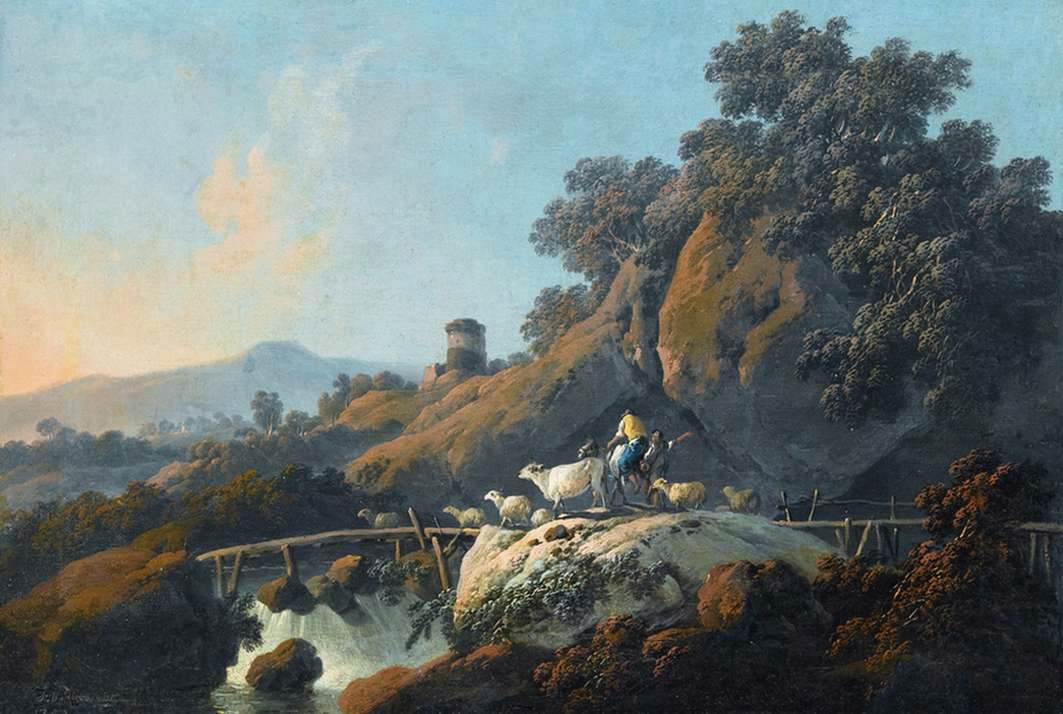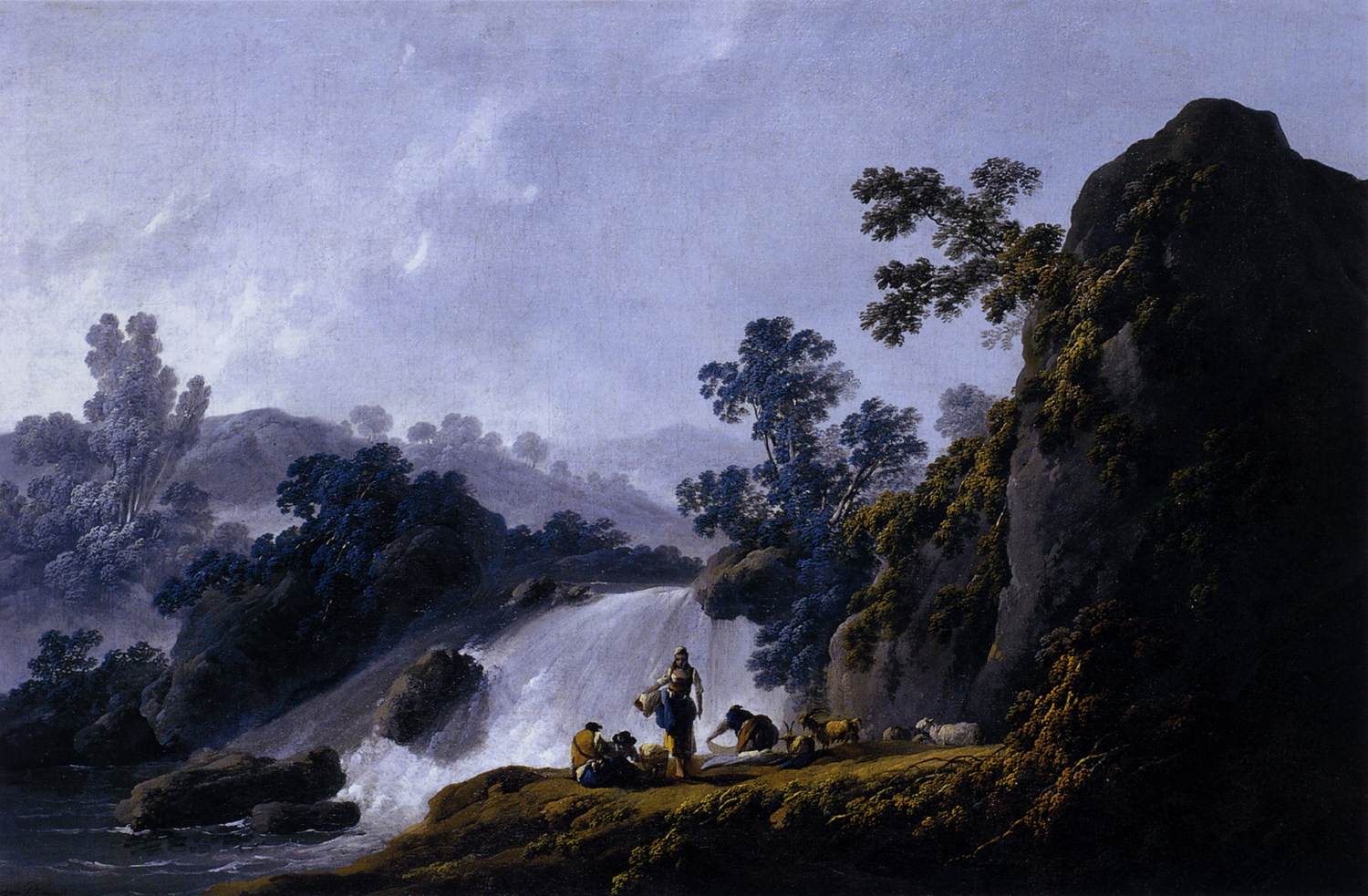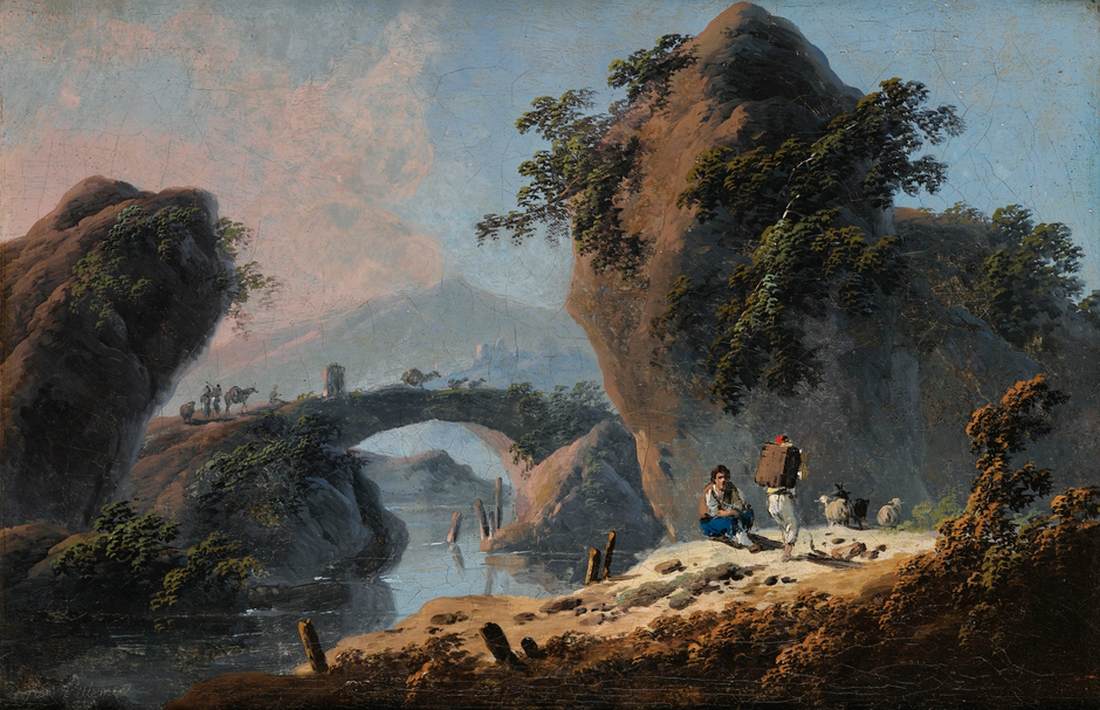French painter and draughtsman. He was an extremely varied and prolific artist who became fashionable early in his career. First trained by Daniel Sarrabat in Lyon, Pillement received a good grounding in the Rococo style of genre painting exemplified in the work of Antoine Watteau and François Boucher. After a brief spell at the Gobelins, in 1745 he left for Madrid. He stayed there for three years, and his work was much appreciated both in Spain and in Portugal, which he visited often. He supervised sets of Rococo singeries and chinoiseries painted for Quinta de Alegria, the house at Seteais, near Sintra, of the Dutch consul in Lisbon, Jan Gildemeester, and soon after he was offered the title of Painter to the King. He declined this honour and instead travelled to London.
He stayed in London for the next 10 years, during which time he fully exploited the English taste for landscapes. In addition to his brightly coloured, artificial landscapes, inspired by Nicolaes Berchem and Claude-Joseph Vernet, Pillement painted fancy pieces, which were theatrical in composition and inspired by prints rather than nature. In the eighteenth century, prints of designs played a major role in the spread of information. They were published on a monthly basis, to be collected into folios or volumes, and could be ordered by subscription. The demand was from all of Europe, from Portugal to Russia, and prints were circulated in the tents of thousands annually. As far as the subject matter of the books of patterns was concerned, Pillement found that the fashion in England was the same as that in France, namely for chinoiseries. It was in this field in particular that he came to be regarded as the paramount heir of Watteau and Boucher.
In 1761, having sold off his remaining work at the annual exhibition in London of the Society of Artists, Pillement travelled to Vienna. In 1763-64 he decorated rooms at the Hofburg and he also worked for Wenceslas, Prince of Liechtenstein. In 1766 Stanislaw II Augustus Poniatowski, King of Poland, requested that Pillement decorate interiors at the royal castle in Warsaw. The result was a room of exquisite chinoiseries as well as the Pillement Room at the Ujazdow Palace. Created pictor regius by the Polish king in 1767, Pillement had in the meantime discovered a new method of printing on silk with fast colours (recorded in his Memoirs, 1764). He remained in Poland from 1765 to 1767. During that time he was granted the honorary title of the First Painter to the King of Poland, together with a commensurate annual pension.
Afterwards he returned to France, where over the next 13 years he was to divide his time and work between Avignon, Lyon, and Paris, while continuing to make frequent working trips to London. In 1778 he was nominated Court Painter to Queen Marie Antoinette, in which capacity he provided paintings for the Petit Trianon at Versailles.
In 1780 he returned to Portugal, where he remained for seven years. There he became one of that country's leading landscape and marine artists. He was also named Court Painter to Queen Maria I and King Pedro III, at last accepting the honour and pension that he had declined some thirty-five years before. He also gained a reputation as one of Portugal's finest teachers of art.
After revisiting Spain, he returned to France in 1789, just as the French Revolution was gaining momentum. However, due to his past association with matters royal, he was forced to seek refuge in the south of France, in the town of Pézenas. There he remained for ten years. It was during that time that he created some of his most admired works of art.
The last ten years of his life were spent in Lyon, where he continued to paint and also teach at its art school. He died there just one month before reaching the age of eighty.
//
![]()









